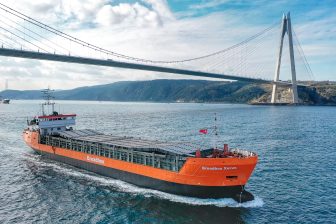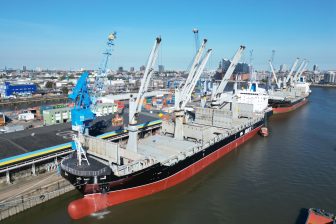
Hapag-Lloyd revises forecast as Q1 figures drop
German container line Hapag-Lloyd reported a decline in first-quarter profit, hit by lower freight rates, but maintained its full-year outlook on the back of a strong start and cost management efforts.
Earnings before interest, taxes, depreciation, and amortization (EBITDA) came in at $942 million for the January-March period, compared with $1.87 billion a year earlier. Group profit fell to $325 million from $2.03 billion.
“Even though our results are significantly below the exceptionally strong figures from the previous year owing to the normalisation of supply chains, we are pleased to have got the new year off to a good start. The rates stabilised in the first quarter due to the rerouting of ships around the Cape of Good Hope and higher demand for capacity,” said Rolf Habben Jansen, CEO of Hapag-Lloyd AG.
“The numerous new ships that have and will be delivered across the industry in 2024 have been instrumental to keep the Supply Chains going without too much disruption. Going forward, we must keep a close eye on our costs, and we will continue the implementation of our Strategy 2030 – with main focus on our decarbonisation initiatives and our promise to be the undisputed number one for quality for our customers,” he said.
The company said transport volumes in its core liner shipping business rose 6.8 per cent to 3 million TEU, offsetting some of the impact from lower freight rates. Active cost management also helped mitigate the rise in expenses caused by rerouting ships around the Cape of Good Hope.
Hapag-Lloyd said it expects full-year group EBITDA to be in the range of $2.2 billion to $3.3 billion, and group EBIT to range from zero to $1.1 billion. The company cautioned that the forecast remains uncertain due to volatile freight rates and geopolitical challenges.
You just read one of our premium articles free of charge
Register now to keep reading premium articles.




